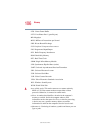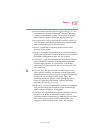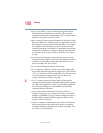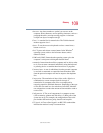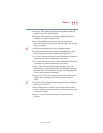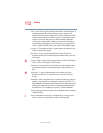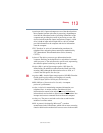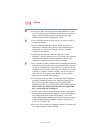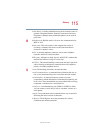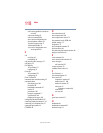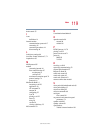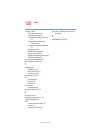
113
Glossary
5.375 x 8.375 ver 2.4.0
input/output (I/O): Input and output are two of the three functions
that computers perform (the other is processing). Input/Output
describes the interrelated tasks of providing information to the
computer and providing the results of processing to users. I/O
devices include keyboards (input) and printers (output). A disk
drive is both an input and an output device, since it can both
provide information to the computer and receive information
from the computer.
ITU-T Standard: A series of communication procedures for
telephone lines and analog data transmission standardized by
ITU (International Telecommunications Union, formerly
CCITT).
K
keyboard: The device you use to type information into the
computer. Each key on the keyboard is a switch that is activated
when you press it. The switch sends a specific code, representing
the character printed on the key, to the processor.
kilobyte (KB): A unit of data storage equal to 1024 bytes. Its
abbreviations (K and KB) are taken from the Greek word kilo,
meaning 1000, although the abbreviation refers to 1024, or 2
raised to the 10th power. See also byte.
M
megabyte (MB): A unit of data storage equal to 1024 KB. From the
Greek work mega for million, one megabyte is actually
1,048,576 bytes (1024 x 1024 bytes). See also byte.
MIPS (Millions of Instructions Per Second): A computer
processor’s performance.
modem: A device for transmitting computer information over
telephone lines. A modem converts (mo
dulates) digital
information for transmission and also converts (dem
odulates)
information it receives back to digital format. Many modems also
interpret and execute commands received from the computer.
modem port: The port to send and receive data to and from the
modem of a remote station.
MNP: A protocol developed by Microcom
®
, a modem
manufacturer in the United States, which with an error correcting
function built into the modem itself corrects errors in the modem.




